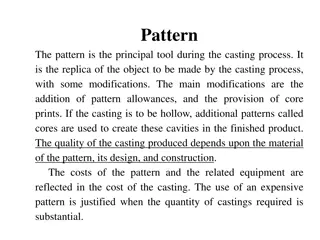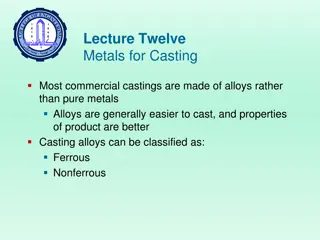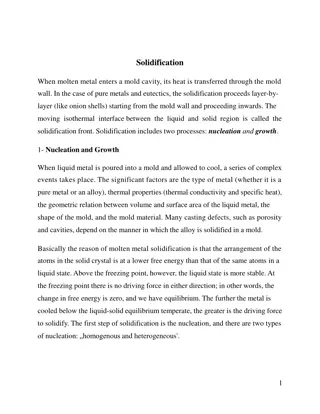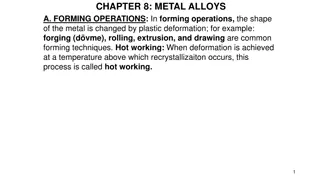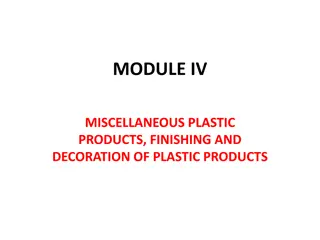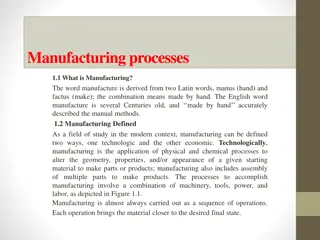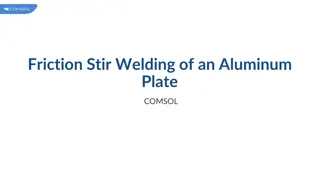
Understanding the Manufacturing Process of aluminum casting parts
Aluminum casting is a widely used manufacturing process in various industries, including automotive, aerospace, construction, and electronics. It involves pouring molten aluminum into a mold to produce a desired shape or part.
Download Presentation

Please find below an Image/Link to download the presentation.
The content on the website is provided AS IS for your information and personal use only. It may not be sold, licensed, or shared on other websites without obtaining consent from the author. If you encounter any issues during the download, it is possible that the publisher has removed the file from their server.
You are allowed to download the files provided on this website for personal or commercial use, subject to the condition that they are used lawfully. All files are the property of their respective owners.
The content on the website is provided AS IS for your information and personal use only. It may not be sold, licensed, or shared on other websites without obtaining consent from the author.
E N D
Presentation Transcript
Understanding the Manufacturing Process of aluminum casting parts www.indgirka.com
In this presentation, we will discuss the manufacturing process of Aluminum Casting Parts in detail. Design and Engineering: The first step in the manufacturing process of aluminum casting parts is designing and engineering the product. This involves creating a detailed 3D model of the part using computer-aided design (CAD) software. Pattern Making: Once the design is finalized, a physical mold or pattern is created using traditional or digital methods. The pattern serves as a template for the mold and is made using materials such as wood, plastic, or metal. Mold Making: The next step in the manufacturing process is creating the mold itself. This involves pouring a liquid material called sand into a box-shaped container called a flask. Core Making: In some cases, aluminum casting parts may require internal cavities or holes called cores. These cores are created separately using materials such as sand, resin, or foam and are inserted into the mold during the casting process to create complex shapes or hollow spaces inside the part.
Cooling and Removal: After pouring, the mold is left to cool for several hours until the aluminum alloy solidifies into its final shape. The cooling process must be carefully controlled to prevent cracking or warping of the part due to thermal stresses caused by rapid cooling rates. Quality Control and Inspection: Throughout each step of the manufacturing process, quality control measures are put in place to ensure that each part meets its intended specifications and performance requirements. Logistics and Shipping: After completing all necessary finishing processes, each part is packaged and shipped to its intended destination using specialized logistics methods that consider factors such as weight, size, fragility, and shipping distance. Melting and Pouring: The next step in the manufacturing process is melting and pouring the aluminum alloy into the mold. This involves heating raw aluminum ingots in a furnace until they reach their melting point (around 1200 F for most aluminum alloys).
Conclusion In conclusion, aluminum casting is a complex manufacturing process that involves several steps from designing and engineering to shipping finished parts to their intended destinations. Each step requires careful consideration of factors such as material selection, tooling design, mold-making techniques, melting processes, cooling rates, quality control measures, logistics methods, and environmental sustainability concerns (e.g., use of recycled materials). INDGIRKA Corporation stands as a premier Casting Parts Supplier in India, delivering precision and quality.
Thank You



